Archives of Loren Williams Fly Tying Tutorials.
Vladi Worm
Fly and Photos by Loren Williams
In the European nymphing disciplines, "anchor" flies are those substantially heavier flies that are used to take a cast of droppers to the stream bottom. Some may call them "sacrificial" because they do not expect to take many fish on them. However, this does not need to be the case. Anchor flies can indeed pull dual-duty of providing weight and catching fish. In reality, true anchor flies are not used as often as many think. Anglers experienced at the art of fishing weighted flies are quite adept at fishing small flies in some pretty violent water with great success. But there are times when a heavy anchor is required and thought should be used when choosing such a fly. Ideally, the fly should be a fish catcher while doing it's other job of getting the droppers deep-all without excessive hang-ups.
The Vladi Worm was shown to me by Poland's Vladi Trzebunia, and as far as I know he developed the thing. Obviously it most represents a large worm, aquatic or otherwise. But, one must ponder it's construction to fully appreciate the value of this fly.
First, the fly is large to it can be weighted to obesity if desired, without sacrificing hook gap. Reduction of the hook gap is a common issue with anchor flies, especially when trying to obtain weights above1-gram.
Next, with it's thin profile and latex clothing, the fly slices right through the water with little interference from the current. This makes the first issue I discussed somewhat less relevant. Furthermore, the humped bend where the weight gets applied causes the fly to invert and this reduces hang-ups.
Last, when tied in the manner shown, the fly has a "super ball" characteristic about it. This feature makes the fly literally bounce off of rocks and other solid debris that it does collide with. It's damned near impossible to get this hung up over rocky substrate. I also strongly feel that this "bounce" feature triggers a response from fish as I tend to do far better with it in rocky areas than I do in silty areas where it does not bounce as much.
Oh yeah, it catches fish like no-one's business. This fly is especially effective in high stained water. But, when I need a fly to get me deep and fast, often this beast is on the starting line-up.
MATERIALS
Hook: 3XL or 4XL streamer hook (#2-#6), bent
Weight: .030" lead wire
Thread: Red heavy underbody, orange 6/0 to finish
Rib: 2-pound Maxima monofilament
Body: lengthwise section of pink latex condom
Click photos to enlarge!
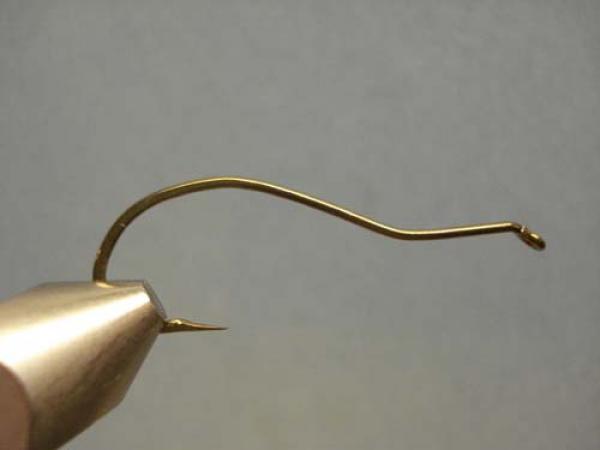
Bend the hook as shown and place hook firmly in your vise. I use needle nose pliers to assist with the bending process.
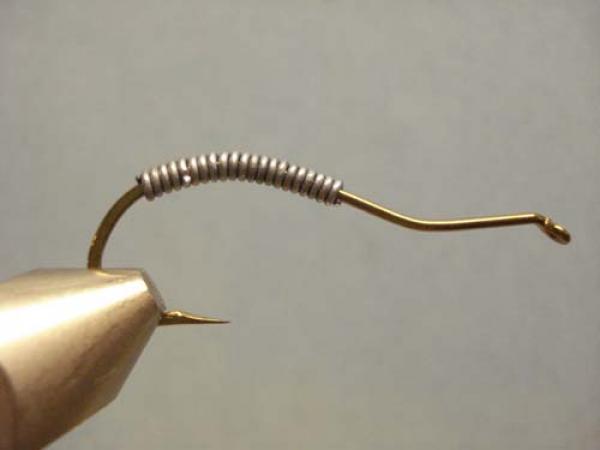
Wrap several turns of lead wire on the newly formed "hump." Weighting this section will cause the hook to invert when being fished. I use .030" diameter wire, but feel free to use whatever you so choose.
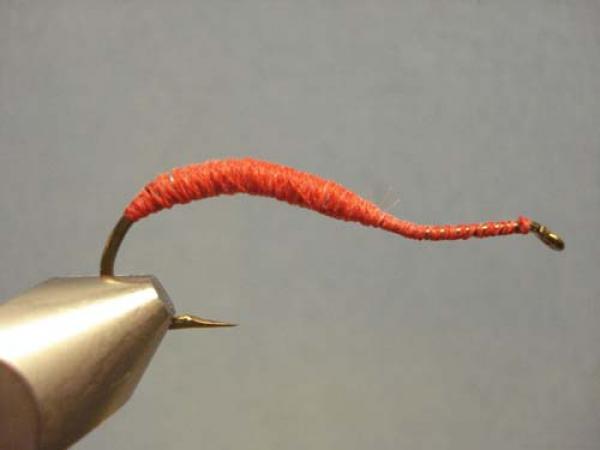
Next, select your heaviest thread or floss and use it to build an underbody, be especially careful to build tapers leading off either edge of the lead coil. Cover the entire hook shank with at least one layer. Building the taper will make it easier to wrap the latex. Play with the color of this thread for interesting effects.
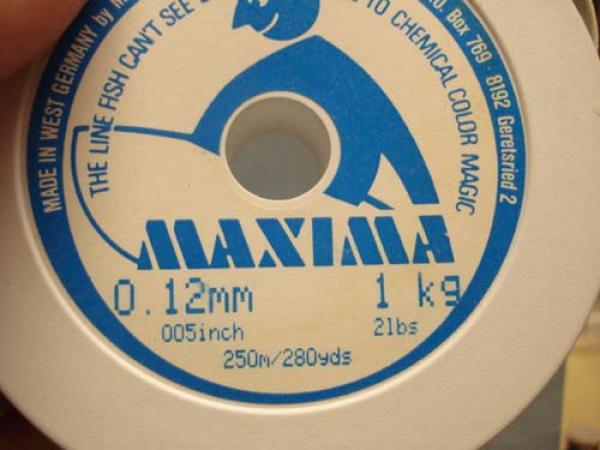
Select your ribbing material and cut of a long section. You'll need the length to get a good grip on the ribbing later on.
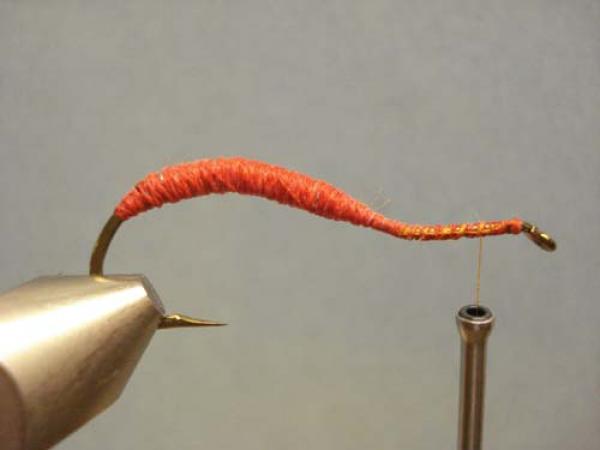
Attach the finishing color thread. I like to use orange or very pale pink.
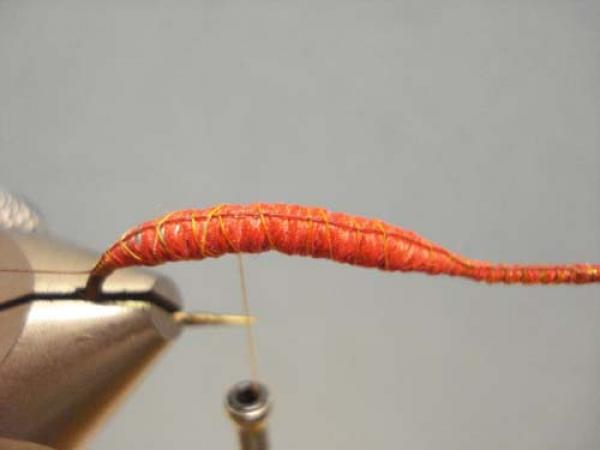
Bind the mono ribbing material down the back of the body. Use lots of wraps and bind it to the entire shank-mono is slippery!
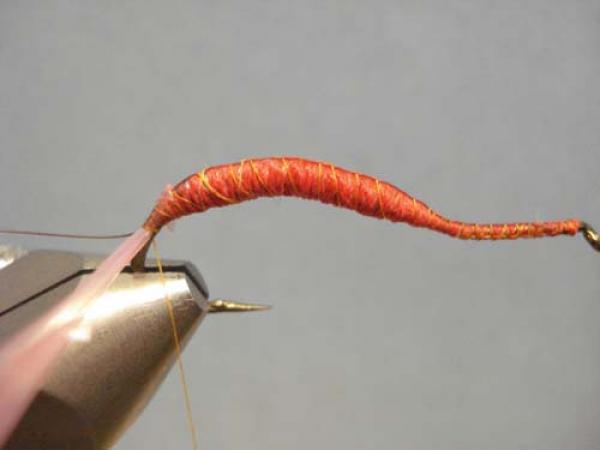
Cut an approximately 3/4" wide section from a pink latex condom (scud back will not work). I find it easiest to keep the condom rolled, and cut it in half. Then I cut the 3/4" sections from that, never unrolling the latex until each section has been cut.
Bind the latex to the rear of the body by the very tip. Keep the thread at the rear after securing the latex.
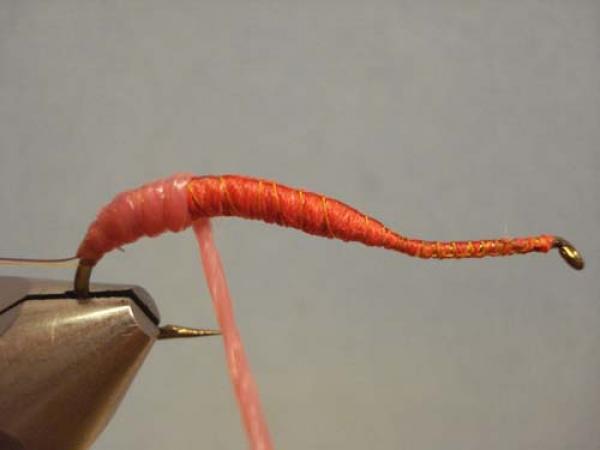
Now, begin wrapping the latex forward. The first few wraps may be tricky-so use enough pressure to keep them in place. Once the wraps take and the latex begins to advance forward, use only one hand to wrap and do not let go between wraps, and use only enough pressure to secure each wrap in place. Doing so will force the latex to roll upon itself and create bulk along the hump.
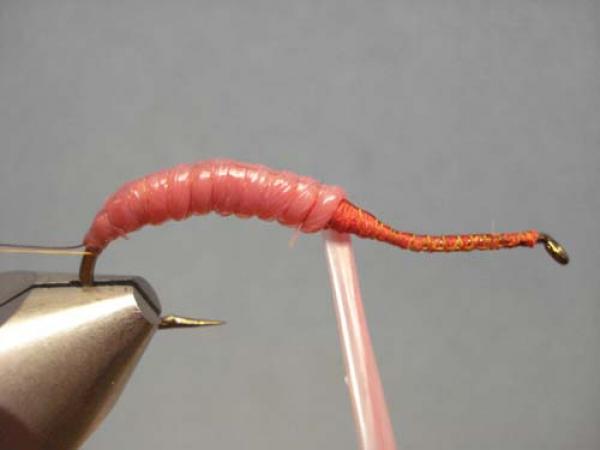
Once your reach the "neck" of the worm, pinch the latex in place with your other hand and allow the latex to untwist. Then, wrap the neck section with a layer of thin, flat latex.
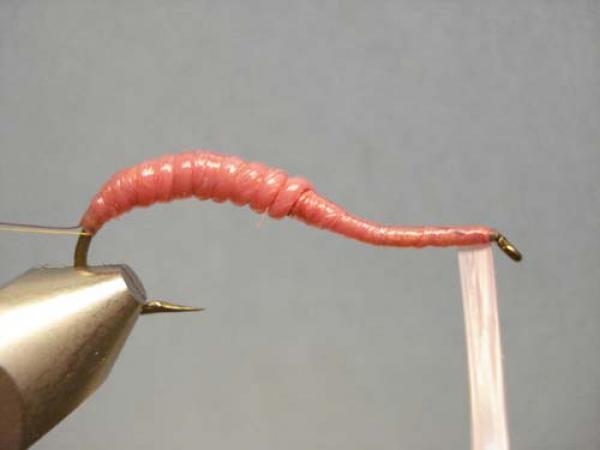
Here, you can see the two different wrapping techniques.
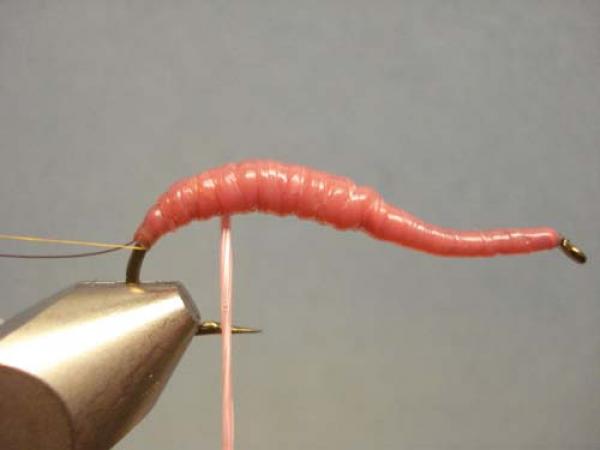
Reverse the process, flat along the neck and then allow the latex to twist upon itself while wrapping back along the hump. You will find that the latex wants to slide-you will learn how to contend with this characteristic and that it lies in the tension you apply.
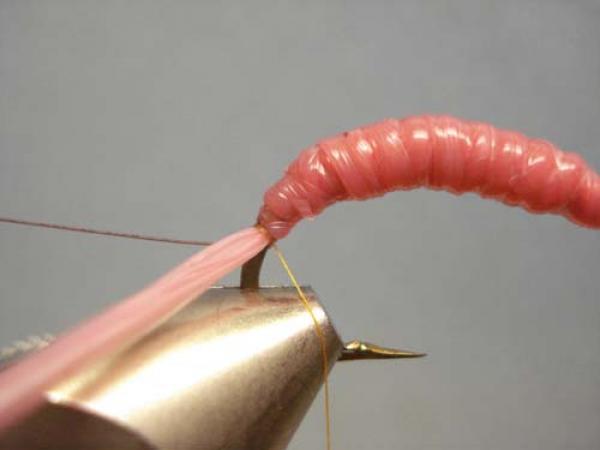
Secure at the rear with a few wraps of thread.
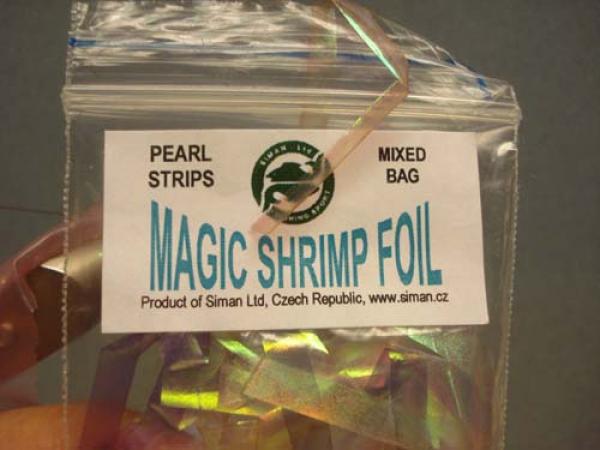
Select a strip of wide flash material. I like to use Siman's Magic Shrimp Foil Pearl Strips, but you can use wide pearl tinsel.
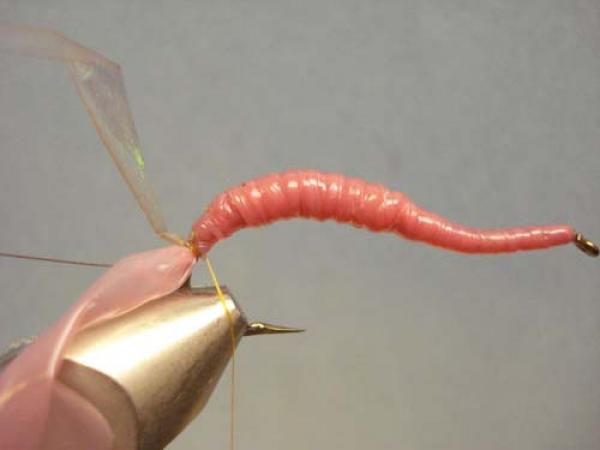
Secure the flash at the rear with a few wraps of thread. Do not worry too much about seeing the thread as unless overused it will disappear.
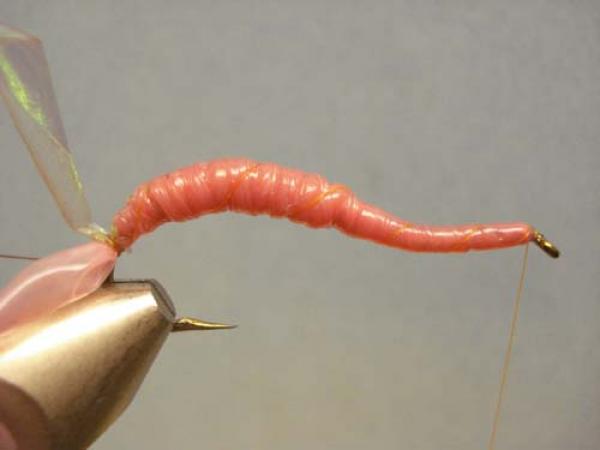
Next, with very open and rather loose wraps, advance the thread to the eye. This will also act to secure the latex wraps a bit and prevent them from sliding.
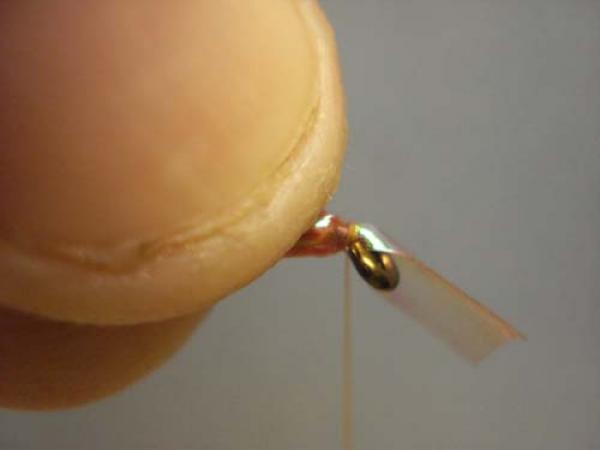
Fold the flash forward, pull it tight, and secure it at the eye. Clip the excess.
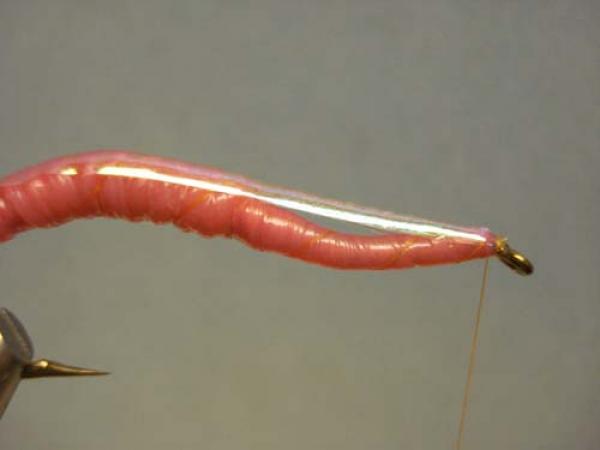
Notice the gap between the flash and thre worm?
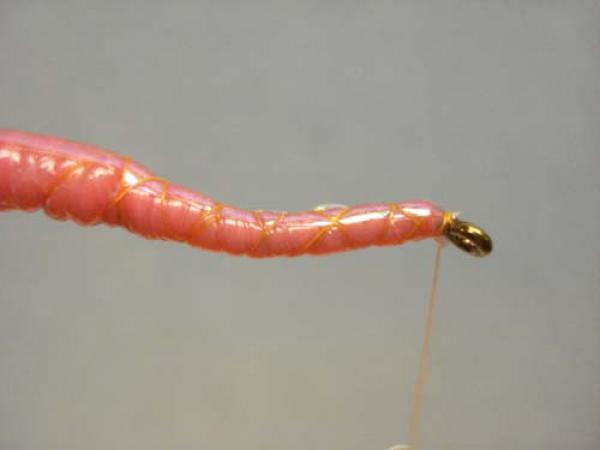
Simply, and rather loosely, wrap the thread up the neck, and back to the eye to tighten-up the flash. No need to wrap up on the hump as the flash will be flush to it.
Note: At this point you have the option to build a "hot spot" by simply tying in a narrow section of bright thread somewhere on the body of the fly. I often add hot spots to the hump.
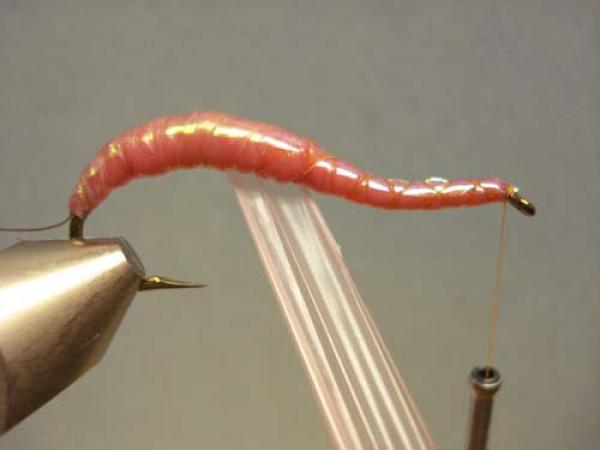
Now, open up the latex so it is flat and wide and wrap it forward. You are looking to get a very thin layer of latex overtop the flash, and any hot spot you may have added.
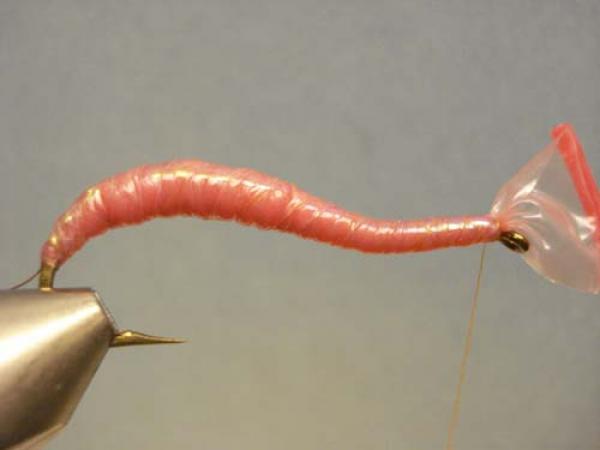
Secure the latex at the eye with a good number of tight thread wraps.
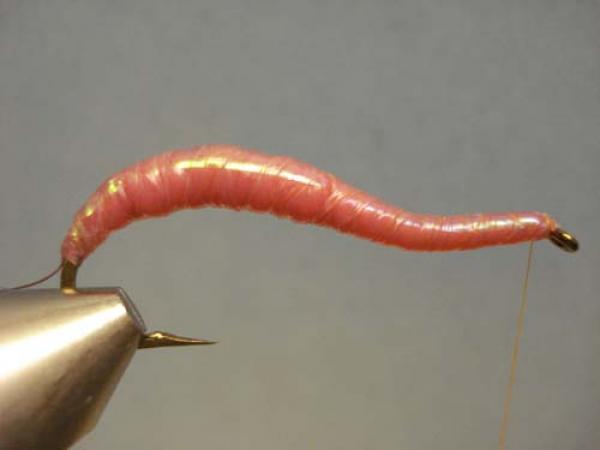
Remove the excess. Put a half-hitch in the thread so that if you bump the bobbin you do not loose the latex!
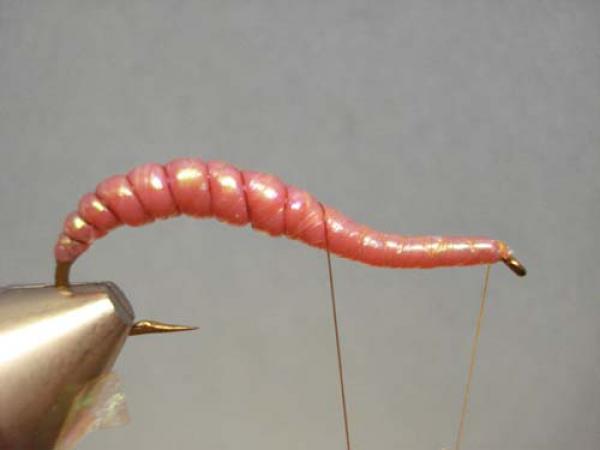
Now, counter-rib the worm with the mono. After each wrap, pull the mono very snug so that it sinks into the latex and form pronounced segments. Don't pull so tight as to break the ribbing or you WILL invent some new bad words!
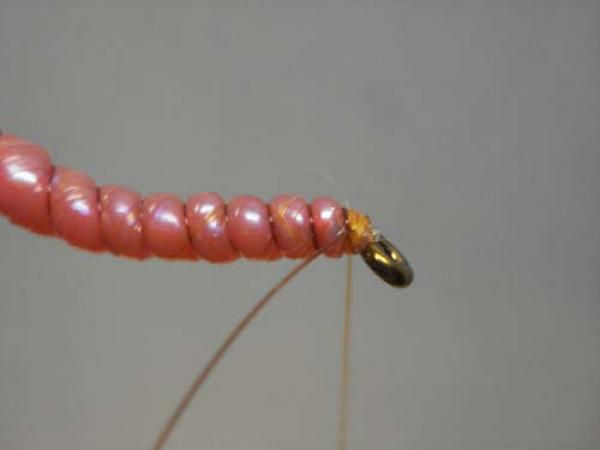
I like to make more segments than less.
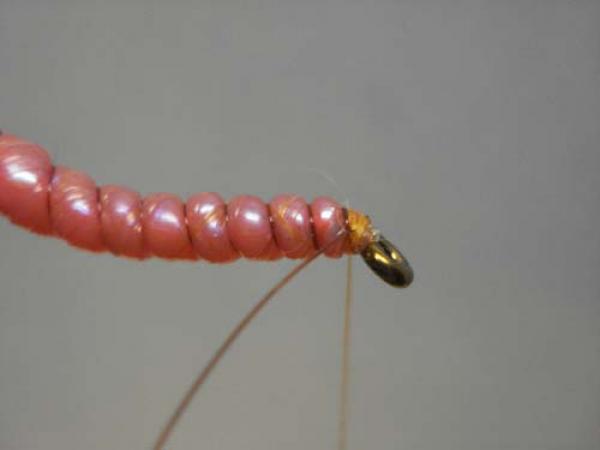
Once at the eye, secure the mono and double it back and secure it again.
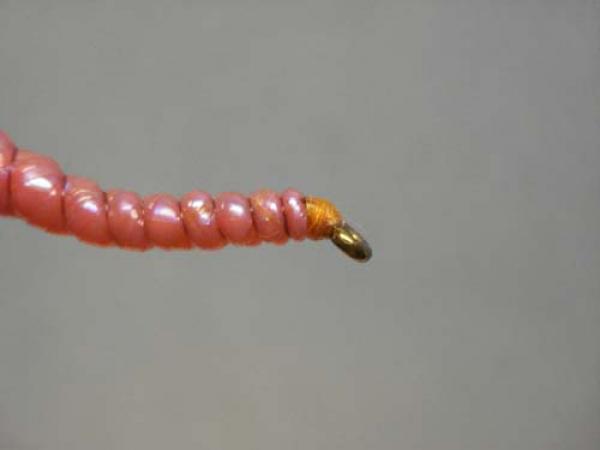
Clip the excess and build a neat head. Cement.
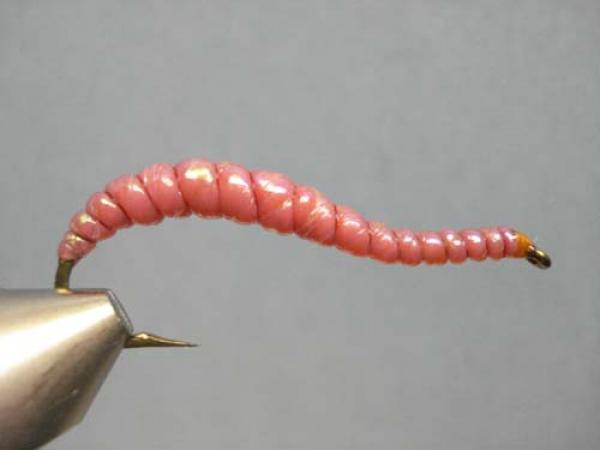
A completed Vladi Worm!